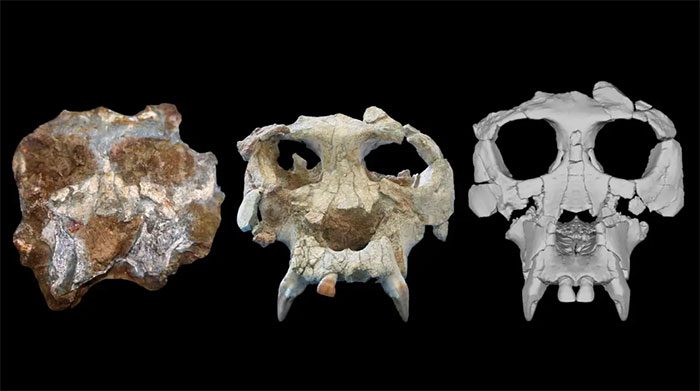The damaged skull of the species Pierolapithecus has been reconstructed digitally, allowing scientists to compare it with both past and present relatives.
A team of anthropologists has assembled the only known skull of the extinct ape scientifically named Pierolapithecus catalaunicus, revealing the true appearance of this ape, according to a report published in the journal Proceedings of the National Academy of Sciences.

Actual skull of Pierolapithecus (left) and reconstructed images of the complete skull. (Photo: AMERICAN MUSEUM OF NATURAL HISTORY).
The digital reconstruction of the skull enables researchers to accurately place the Pierolapithecus in the family tree of hominins. At the same time, it enhances our understanding of how this ape lived in what is now Spain 12 million years ago.
Pierolapithecus was first described in 2004, when a portion of the skull and facial bones of this species were found at a landfill in the outskirts of Barcelona (Spain).
The specimen is dated to over 12 million years old and was discovered alongside two other extinct ape species, Dryopithecus and Anoiapithecus, according to lead researcher Kelsey Pugh, an anthropologist at the American Museum of Natural History in New York.
Based on the team’s initial analysis, Pierolapithecus had an upright posture, indicating a close relationship with the nearest ancestors of great apes and humans.
In the new report, the team led by expert Pugh conducted a CT scan of the fossil skull, aiming to reconstruct its actual shape on a computer for comparison with other hominin species.
The ability to stand upright suggests that like many other hominin species, Pierolapithecus could grasp branches and move through tree canopies. However, it was only after the CT scans were performed that researchers could compare Pierolapithecus with known hominin species.


















































